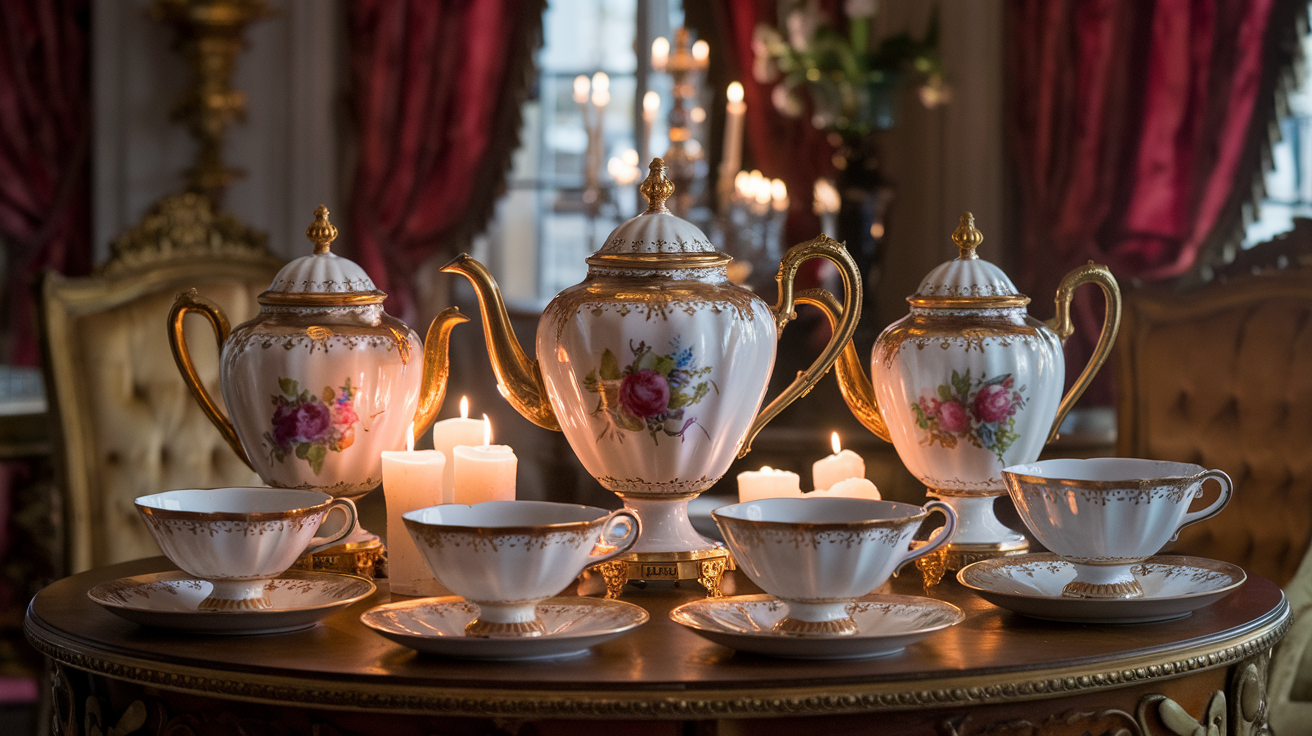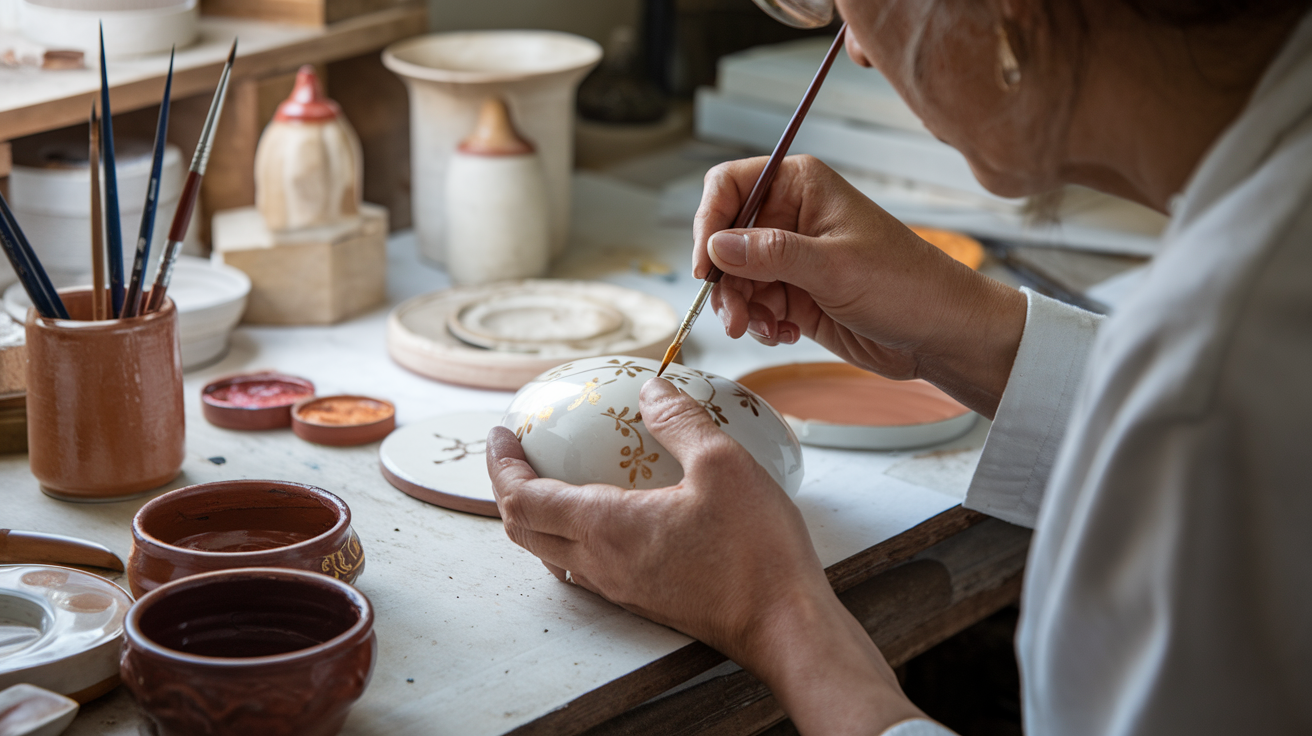Introduction
Limoges ceramics are synonymous with refinement and artisanal excellence. This article explores its history, the craftsmanship that distinguishes it, and the innovations that ensure its longevity in the world of luxury and collecting.
The Origins of Limoges Ceramics
In 1768, the discovery of kaolin in Saint-Yrieix-la-Perche, near Limoges, marked the beginning of a centuries-old tradition. This material, essential for the production of hard-paste porcelain, transformed Limoges into a major ceramics production center. Two years later, in 1771, the first manufactories were established, thanks in part to the support of the French monarchy, which acquired the deposit and granted manufacturing privileges to the Grellet brothers and their partner Massié-Fournérat.
The Rise of Limoges Porcelain in the 19th Century
During the 19th century, Limoges porcelain experienced a golden age. The support of the royal family and the introduction of new decorative techniques contributed to the global spread of the Limoges brand, making it a symbol of luxury and sophistication. During this period, the number of factories increased significantly, and entrepreneurs like the American David Haviland played a crucial role in expanding the market, especially in the United States.

The Characteristics of Limoges Porcelain
The unique quality of Limoges porcelain is due to the purity of the kaolin used, high-temperature firing, and extraordinary finishes. Hand-painted decorations, gold gilding, and meticulous details make it an unparalleled product.
Limoges Porcelain Between Art and Luxury
From European courts to Michelin-starred restaurants, Limoges porcelain is a symbol of exclusivity. Historic brands such as Bernardaud, Haviland, and Raynaud continue to produce high-end pieces, often in limited editions, keeping the tradition alive.
Tradition and Innovation in Production
While respecting traditional techniques, Limoges manufactories invest in research and development to improve the strength and lightness of porcelain. Collaborations with contemporary artists and designers ensure a constant evolution of the sector.

The Production Process of Limoges Porcelain
The production of Limoges porcelain follows a rigorous process: from kaolin extraction to modeling, from the first firing to glazing, up to hand-painted decorations. Each phase requires extreme precision to ensure the superior quality of the final product.
Collecting and the Value of Limoges Porcelain
Ceramics enthusiasts seek antique and contemporary pieces for their artistic and historical value. Certifications and authenticity marks help distinguish genuine Limoges porcelain from counterfeits, ensuring its investment value.
The Impact of Limoges Ceramics in Contemporary Art
Many artists use Limoges porcelain as a means of expression. Collaborations with museums and modern designers demonstrate that this artisanal tradition can coexist with contemporary art, enriching its aesthetic possibilities.

The Future of Limoges Ceramics
Limoges manufactories are shifting towards sustainable practices, reducing the environmental impact of production and developing new technologies. The combination of craftsmanship and innovation ensures a bright future for Limoges porcelain in the luxury market.
Conclusion
Limoges porcelain continues to represent the perfect balance between tradition and innovation. Its refinement, unparalleled quality, and historical prestige make it one of the most admired excellences of French artisanal production.
Share your photo and get featured on our social media.
Upload now and shine with The Glanz!